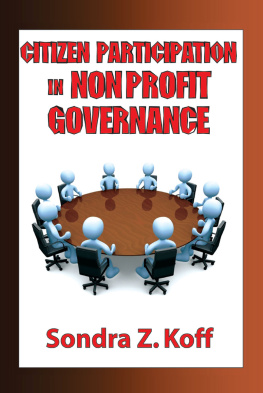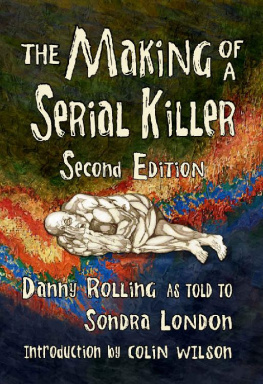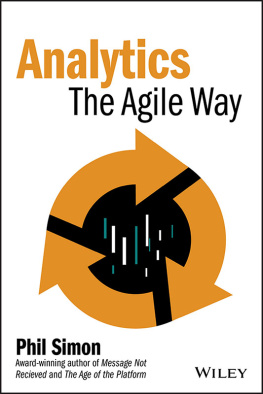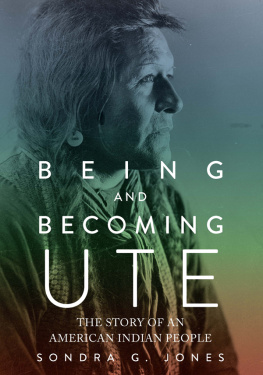Sondra Ashmore Ph. D. Kristin Runyan - Introduction to Agile Methods
Here you can read online Sondra Ashmore Ph. D. Kristin Runyan - Introduction to Agile Methods full text of the book (entire story) in english for free. Download pdf and epub, get meaning, cover and reviews about this ebook. year: 2014;2015, publisher: Pearson Education Limited (US titles), genre: Business. Description of the work, (preface) as well as reviews are available. Best literature library LitArk.com created for fans of good reading and offers a wide selection of genres:
Romance novel
Science fiction
Adventure
Detective
Science
History
Home and family
Prose
Art
Politics
Computer
Non-fiction
Religion
Business
Children
Humor
Choose a favorite category and find really read worthwhile books. Enjoy immersion in the world of imagination, feel the emotions of the characters or learn something new for yourself, make an fascinating discovery.

- Book:Introduction to Agile Methods
- Author:
- Publisher:Pearson Education Limited (US titles)
- Genre:
- Year:2014;2015
- Rating:4 / 5
- Favourites:Add to favourites
- Your mark:
- 80
- 1
- 2
- 3
- 4
- 5
Introduction to Agile Methods: summary, description and annotation
We offer to read an annotation, description, summary or preface (depends on what the author of the book "Introduction to Agile Methods" wrote himself). If you haven't found the necessary information about the book — write in the comments, we will try to find it.
Introduction to Agile Methods — read online for free the complete book (whole text) full work
Below is the text of the book, divided by pages. System saving the place of the last page read, allows you to conveniently read the book "Introduction to Agile Methods" online for free, without having to search again every time where you left off. Put a bookmark, and you can go to the page where you finished reading at any time.
Font size:
Interval:
Bookmark:
ePUB is an open, industry-standard format for eBooks. However, support of ePUB and its many features varies across reading devices and applications. Use your device or app settings to customize the presentation to your liking. Settings that you can customize often include font, font size, single or double column, landscape or portrait mode, and figures that you can click or tap to enlarge. For additional information about the settings and features on your reading device or app, visit the device manufacturers Web site.
Many titles include programming code or configuration examples. To optimize the presentation of these elements, view the eBook in single-column, landscape mode and adjust the font size to the smallest setting. In addition to presenting code and configurations in the reflowable text format, we have included images of the code that mimic the presentation found in the print book; therefore, where the reflowable format may compromise the presentation of the code listing, you will see a Click here to view code image link. Click the link to view the print-fidelity code image. To return to the previous page viewed, click the Back button on your device or app.
Sondra Ashmore, Ph.D.
Kristin Runyan

Upper Saddle River, NJ Boston Indianapolis San Francisco
New York Toronto Montreal London Munich Paris Madrid
Capetown Sydney Tokyo Singapore Mexico City
Many of the designations used by manufacturers and sellers to distinguish their products are claimed as trademarks. Where those designations appear in this book, and the publisher was aware of a trademark claim, the designations have been printed with initial capital letters or in all capitals.
The authors and publisher have taken care in the preparation of this book, but make no expressed or implied warranty of any kind and assume no responsibility for errors or omissions. No liability is assumed for incidental or consequential damages in connection with or arising out of the use of the information or programs contained herein.
For information about buying this title in bulk quantities, or for special sales opportunities (which may include electronic versions; custom cover designs; and content particular to your business, training goals, marketing focus, or branding interests), please contact our corporate sales department at or (800) 382-3419.
For government sales inquiries, please contact .
For questions about sales outside the United States, please contact .
Visit us on the Web: informit.com/aw
Library of Congress Cataloging-in-Publication Data
Ashmore, Sondra.
Introduction to agile methods / Sondra Ashmore, Ph.D., Kristin Runyan.
pages cm
Includes index.
ISBN 978-0-321-92956-3 (pbk. : alk. paper)
1. Agile software development. 2. Open source software. I. Runyan, Kristin. II. Title.
QA76.76.D47A83 2014
005.3dc23
2014014568
Copyright 2015 Pearson Education, Inc.
All rights reserved. Printed in the United States of America. This publication is protected by copyright, and permission must be obtained from the publisher prior to any prohibited reproduction, storage in a retrieval system, or transmission in any form or by any means, electronic, mechanical, photocopying, recording, or likewise. To obtain permission to use material from this work, please submit a written request to Pearson Education, Inc., Permissions Department, One Lake Street, Upper Saddle River, New Jersey 07458, or you may fax your request to (201) 236-3290.
ISBN-13: 978-0-321-92956-3
ISBN-10: 0-321-92956-X
Text printed in the United States on recycled paper at RR Donnelley in Crawfordsville, Indiana.
First printing, July 2014
For my sons, Drake and Dane, who encourage
me to follow my dreams, and for my husband,
Brian, who helps make them all possible.
Sondra Ashmore
For my family and friends, from
whom I am continuously learning.
Kristin Runyan
What is Agile software development, and what does it mean when someone says, Our team used Agile to develop software? In our experiences, we have encountered many people who can tell you about some of the Agile tools they have heard about or experienced, such as Scrum meetings or paired programming, but few touch on the fact that it is a fundamentally different approach to creating software.
Over the last several years, we were both teaching entry-level Agile software development coursesSondra was teaching graduate students at Iowa State University, and Kristin was training her staff at her companyand we struggled to find a basic book on Agile software development that we could use in a classroom setting. When we met while doing volunteer work for a local technology nonprofit organization, we discovered that we were facing very similar challenges in finding the right book. It was that conversation that sparked the idea of writing our own book on Agile methods.
Our introductions to Agile were similar: We both were managing software development teams that were accustomed to using the more traditional method of software development called Waterfall, and we took on the challenge of implementing some of the Agile software development tools into our projects, with the ultimate goal of becoming Agile software development organizations. Although we both jumped in and learned all we could about Agile software development, we quickly realized that Agile is a lot more than training people on new tools and methodologies. It did not take long to understand that our organizations had to make a cultural shift to become Agile, which introduced many more challenges than we had anticipated. The transition to Agile was not a destination, as our executive teams had predicted, but rather a journey that is constantly evolving based on the lessons we have learned, or retrospectives in Agile terminology.
We firmly believe that Agile methods offer very real benefits for the world of software engineering. Our goal is not to provide you with a comprehensive collection of everything there is to know about Agile software development, but rather to provide you with the basics you need to know to get started. Alistair Cockburn, who is featured in methods. First you are in the Shu phase, when you must mimic your teacher precisely to master the basics. Next is Ha, where you start to learn from other teachers that help you build on your skills, and you begin to gain knowledge about the history and theoretical basis for the technique. Finally, you reach the Ri phase, where you become the teacher and make new contributions to the technique. It is our hope that after reading this book, you are well on your way to the Ha stage.
We start by introducing you to the history of Agile software development, then build on the tools and techniques that are common in most Agile organizations. We end by discussing how the process comes together to launch new and exciting products to the marketplace. We have included interviews with practitioners to give you a sense of what happens in organizations that have adopted Agile methods. Each chapter concludes with a summary, suggestions for additional reading, and review questions.
The following is a brief introduction to the information you will find in each chapter:
This chapter provides the background of the Agile movement and compares Agile to the more traditional Waterfall methodology. We explore the use cases for both Waterfall and Agile and explain the pros and cons of each. The chapter introduces the Agile Manifesto, its values, and its authors. We review the 12 key principles of Agile and introduce a fictitious company, Cayman Design, that is used for example purposes throughout the book. We include an interview with Robert (Uncle Bob) Martin.
Font size:
Interval:
Bookmark:
Similar books «Introduction to Agile Methods»
Look at similar books to Introduction to Agile Methods. We have selected literature similar in name and meaning in the hope of providing readers with more options to find new, interesting, not yet read works.
Discussion, reviews of the book Introduction to Agile Methods and just readers' own opinions. Leave your comments, write what you think about the work, its meaning or the main characters. Specify what exactly you liked and what you didn't like, and why you think so.










